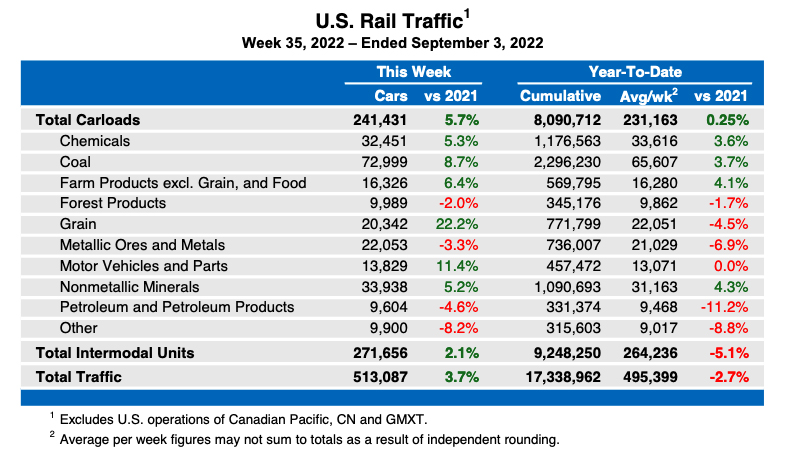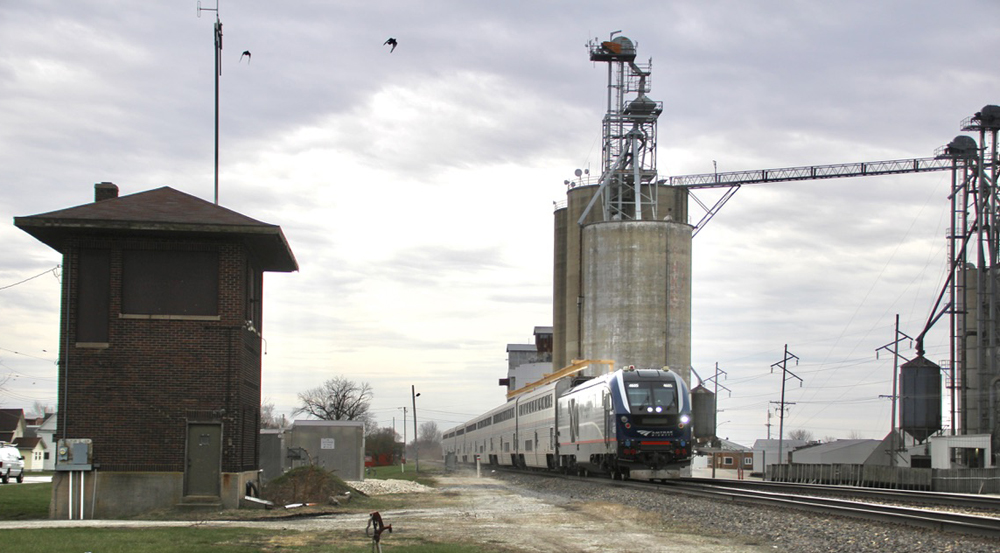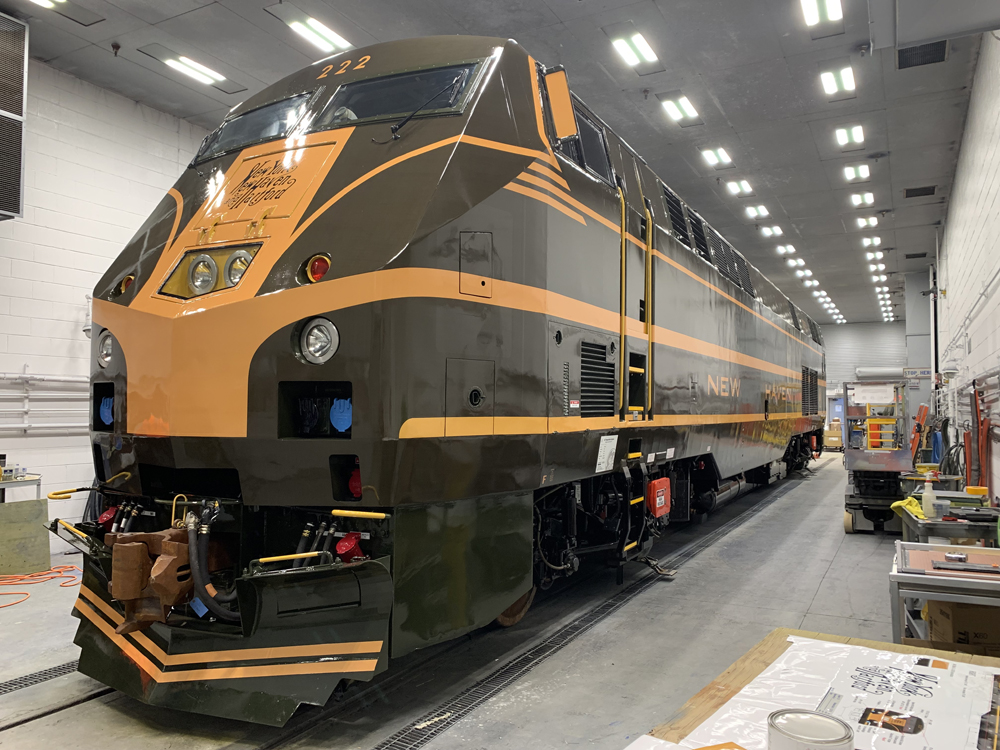
WASHINGTON — U.S. rail traffic in August inched above the level for the same month in 2021, the first time volume has been in positive territory since February, when statistics were skewed by weather problems the previous year.
August totals saw carloads up 2.3% and intermodal units down 1.2% for a total increase of 0.4%, or 11,184 carloads and intermodal units, from August 2021. That ended a string of five months when volume was below 2021 levels, and in the previous instance — in February, when volume climbed 5.7% — was largely a reflection of the severe winter weather in February 2021 [see “February rail traffic improved …,” Trains News Wire, March 3, 2022].
“Things can change quickly, but there are reasons to believe the economy is on track to stimulate continued improvements in rail volumes,” AAR Senior Vice President John T. Gray said in a press release. “To be sure, some traffic categories are doing better than others, just like some sectors of the economy are doing better than others. Through additional hiring and continued investments, railroads are preparing themselves for growth.”
Eleven of the 20 carload categories tracked by the AAR in its monthly stats showed increases, led by grain, up 14.1%.
Year-to-date totals for the first 35 weeks of 2022 remain 2.7% below the same period in 2021.
Weekly numbers also up
Weekly U.S. traffic for the week ending Sept. 3 continued an upward trend, with the total of 513,087 carloads and intermodal units representing a 3.7% increase over the corresponding week in 2021. That figure included 241,431 carloads, up 5.7%, and 271,656 containers and trailers, up 2.1%.
North American totals, for 12 reporting U.S., Canadian, and Mexican railroads, include 704,503 carloads and intermodal units, up 5.3% over the same week in 2021. That includes 339,416 carloads, up 6.3%, and 365,087 intermodal units up 4.5%. Year-to-date North American volume through 35 weeks of 2022 is 2.5% below 2021 levels.













